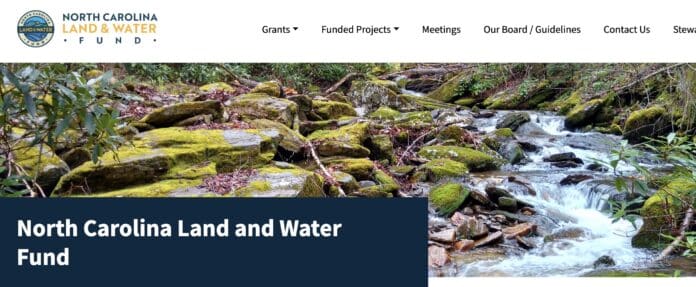North Carolina Construction News staff writer
The North Carolina Land and Water Fund Board of Trustees met Sept. 19 and 20 to consider grant applications and make awards for projects that will protect North Carolina’s land and water from the mountains to the coast. With the newly enacted state budget, over $45 million will be available immediately to fund these projects.
“Our natural areas, rivers and streams are critical to the health and well-being of North Carolinians and our economy,” Gov. Roy Cooper said in a statement. “These grants will help protect our state’s land and wetlands for generations to come.”
The funds will protect 16,793 acres, over 14,000 of which will eventually be open to the public for hiking, hunting, boating, birding and other recreational uses. Funds were also granted for 13 projects to restore or enhance over 10 miles of streams, rivers, lakes, and estuaries and to restore over 7,000 acres of drained or otherwise impaired wetlands. Funds were awarded for two projects designed to evaluate innovative techniques for managing stormwater. In addition, 13 planning projects were funded to identify key water quality and conservation opportunities in mountain, piedmont and coastal watersheds.
Projects will protect 134 types of rare plants, animals, and natural communities including:
- over 2,100 acres to be added to N.C. Wildlife Resources Commission game lands in Ashe and Scotland counties
- over 4,300 acres to N.C. State Parks in Avery, Chatham, Guilford, Iredell, Robeson, Rockingham, Transylvania, and Yancey counties
- over 6,000 acres in local parks and preserves in Bertie, Buncombe, Carteret, Cherokee, Durham, Hertford, Johnston, Macon, New Hanover, Orange, Rutherford, and Wake counties
- Nine sites with historic and cultural resources, including Black Mountain College Historic District, Mount Helen Estates Historic District, Worrells Mill, Trail of Tears Tatham Gap Segment, and multiple archaeological sites, as well as buffering the Blue Ridge Parkway and Walnut Hill Rural Historic District;
- over 18 miles of streams, rivers, and shores via living shoreline construction, stream and floodplain restoration, and dam removal projects, including a project on the Oconaluftee River that will reconnect 478 miles of river and streams, expanding habitat for the North Carolina threatened Sicklefin Redhorse
- 13 planning grants across North Carolina, including identifying threats to water supplies, stormwater management and stream restoration opportunities, and wetlands and floodplains capable of mitigating flooding. Communities and areas impacted include Boone, Biltmore Forest, the Lumbee Cultural Center, King’s Mountain, Greenville, Morganton, and Thomasville; and
- two innovative stormwater projects designed to evaluate the effectiveness of novel stormwater treatment systems in Wilson and Craven counties.
“The board considered 114 outstanding applications from our conservation partners for a wide variety of great projects throughout the state, from removing a century-old dam and reconnecting a huge watershed in Swain County, to protecting almost 4,000 acres along the Northeast Cape Fear River for a new park just 10 miles from downtown Wilmington in New Hanover County,” said John Wilson, chair of the North Carolina Land and Water Fund board of trustees.
A complete list of grant awards is available on the NCLWF website at https://nclwf.nc.gov/2023-nclwf-awards.

